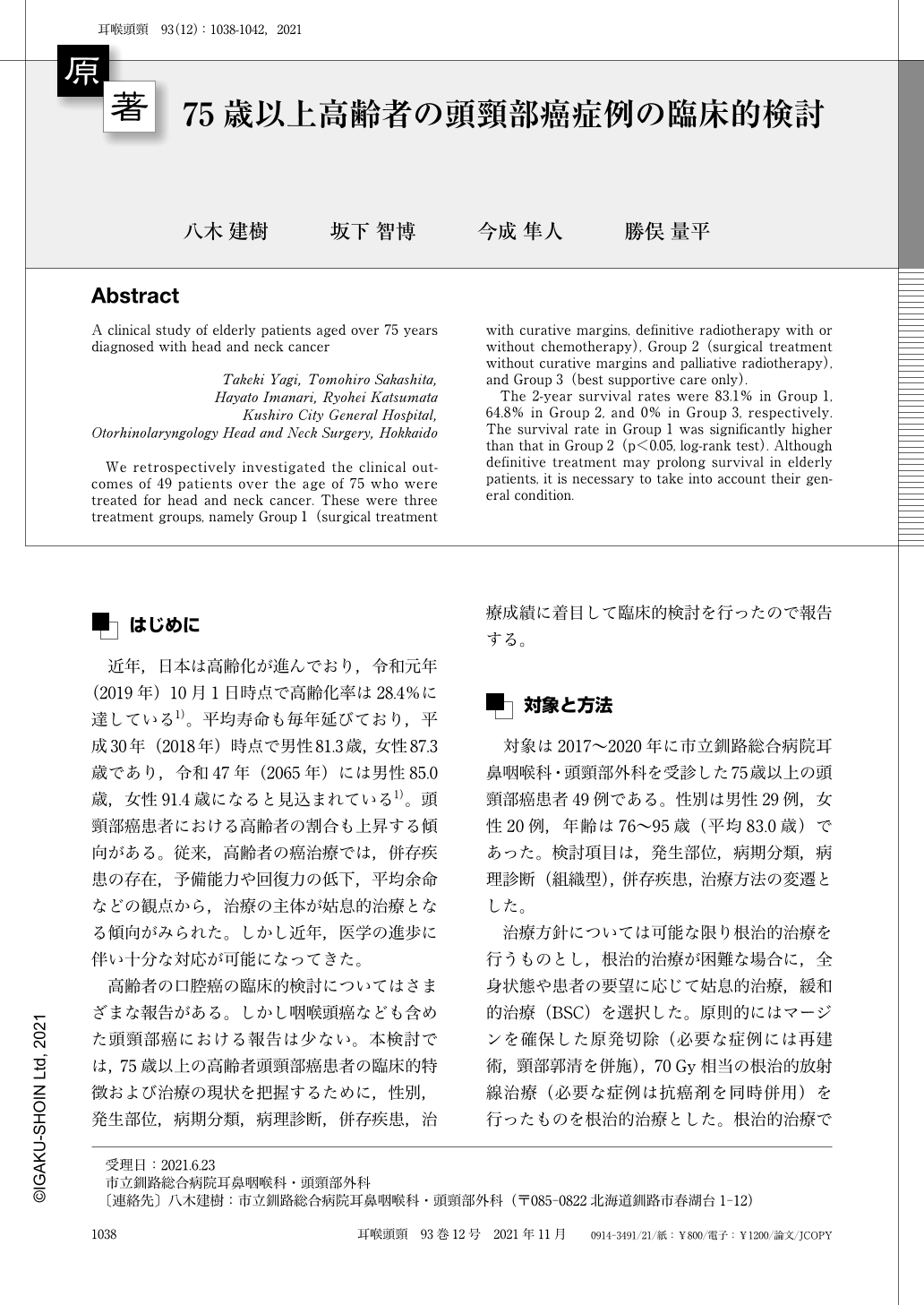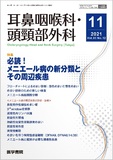Japanese
English
- 有料閲覧
- Abstract 文献概要
- 1ページ目 Look Inside
- 参考文献 Reference
はじめに
近年,日本は高齢化が進んでおり,令和元年(2019年)10月1日時点で高齢化率は28.4%に達している1)。平均寿命も毎年延びており,平成30年(2018年)時点で男性81.3歳,女性87.3歳であり,令和47年(2065年)には男性85.0歳,女性91.4歳になると見込まれている1)。頭頸部癌患者における高齢者の割合も上昇する傾向がある。従来,高齢者の癌治療では,併存疾患の存在,予備能力や回復力の低下,平均余命などの観点から,治療の主体が姑息的治療となる傾向がみられた。しかし近年,医学の進歩に伴い十分な対応が可能になってきた。
高齢者の口腔癌の臨床的検討についてはさまざまな報告がある。しかし咽喉頭癌なども含めた頭頸部癌における報告は少ない。本検討では,75歳以上の高齢者頭頸部癌患者の臨床的特徴および治療の現状を把握するために,性別,発生部位,病期分類,病理診断,併存疾患,治療成績に着目して臨床的検討を行ったので報告する。
We retrospectively investigated the clinical outcomes of 49 patients over the age of 75 who were treated for head and neck cancer. These were three treatment groups, namely Group 1(surgical treatment with curative margins, definitive radiotherapy with or without chemotherapy), Group 2(surgical treatment without curative margins and palliative radiotherapy), and Group 3(best supportive care only).
The 2-year survival rates were 83.1% in Group 1, 64.8% in Group 2, and 0% in Group 3, respectively. The survival rate in Group 1 was significantly higher than that in Group 2(p<0.05, log-rank test). Although definitive treatment may prolong survival in elderly patients, it is necessary to take into account their general condition.

Copyright © 2021, Igaku-Shoin Ltd. All rights reserved.


